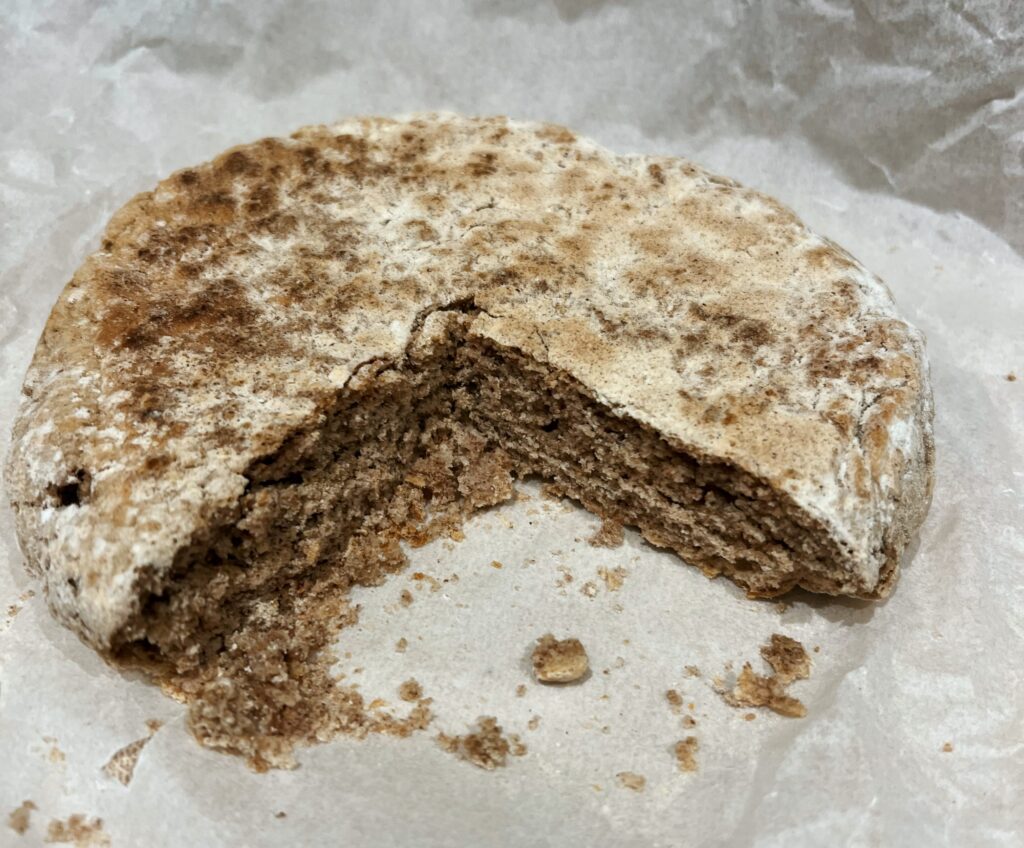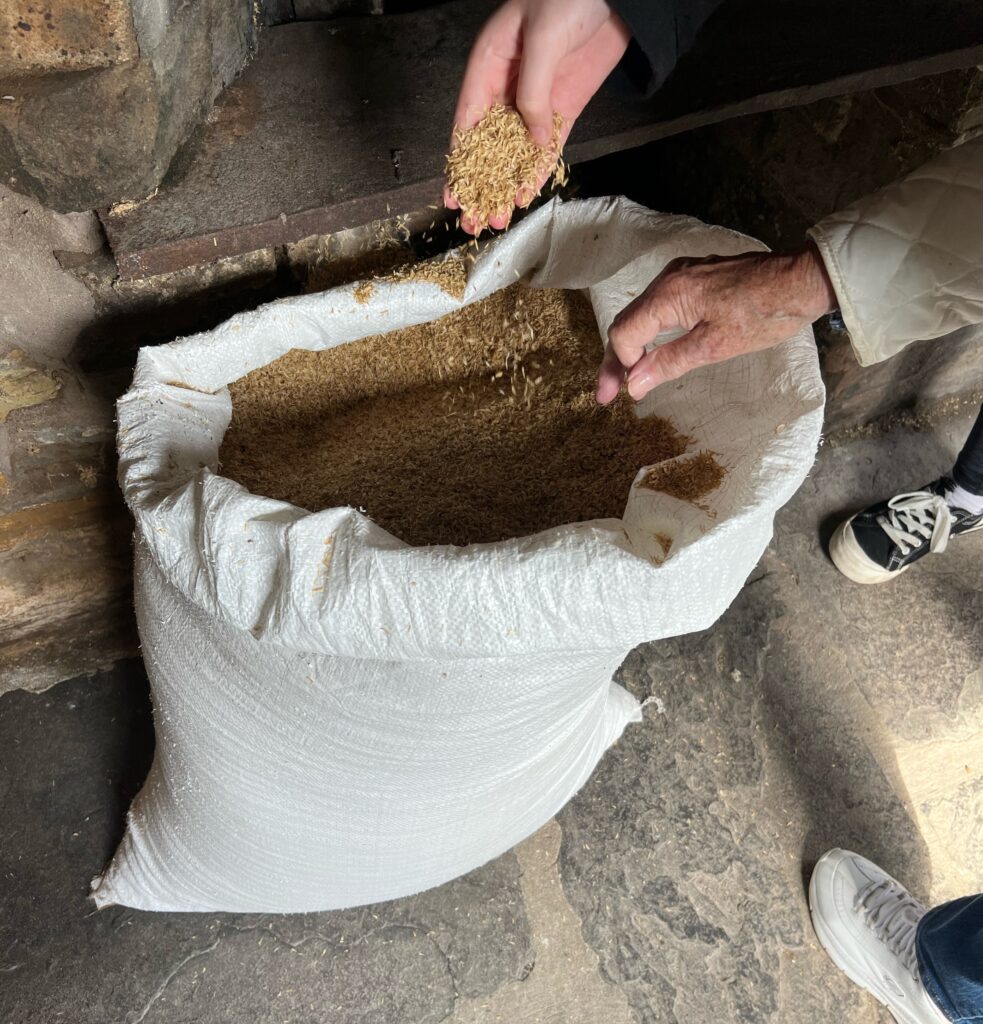Bear with me while I expound on bere bannocks today.
It is unlikely you have come across bere bannocks if you haven’t been to Orkney. Bere is an ancient version of barley and bannocks are Scotland’s spirited response to tandoori roti. Make bannocks from bere and you get a flatbread like none other.
Bere is pronounced not in the let’s-get-drunk way, but more with a take-your-clothes-off inflection. It was widely cultivated in Britain once upon a time, especially in the northern parts and where the soil was poor. But from the nineteenth century, it got kicked down the ladder of priorities by the new, high-yielding variety of barley, and the deepening fascination with potatoes. It is now grown only in a small area in Orkney, and after other water mills that use the traditional stone-grinding technique shut down across the isles, Orkney has been left to carry the weight of history.
I arrived at all this information via a piece of bannock that Yvonne, my Orcadian host, served me. It was light and fluffy and a bit nutty. Thick, rustic yet somehow delicate too. You could break off small pieces and pop them into your mouth. You only had to threaten to chew and the bread kind of crumbled and melted in your mouth in a most delectable way. It reminded me a little of Lembas, the Elven bread in Lord of the Rings.
Yvonne gave me the short history of the bread, including how to make it so that it is not too dry. She also pointed me in the direction of Barony Mills, the last surviving bere mill, where I had further education from Alister Harcus, the last in the line of a short list of bere millers.
Barony Mills has been in business since 1873, with pretty much all of its original machinery — including the grinding stones, which William Hepburn, the first miller bought — still in use. In fact, its whole SOP remains largely unchanged. Imagine building something today and expecting it to work for the next 200 years! It really is incredible the craftsmanship and ingenuity of that time.
The mill makes use of the bere cultivated in about 90 acres of farmland around it. The grain is first hoisted to the third floor by a pulley system. There it is spread out, one ton at a time, and dried using a kiln. The husks are then cracked by the ‘shilling stones’ and separated with a ‘fanner’, after which the grain is coarsely ground. This is then transported to the ‘beremeal stones’, where the grain gets another good grinding to finally end up as ‘beremeal’, which is the flour you get to buy in Orkney shops to make your bannocks, bread, shortbreads, and whatnots.
The fire power to the mill comes from the husks: the previous ton fuels the next and so on, which should make the UN very happy. As for the rest of the mill machinery, it is run by water, of course.
Alister took me to the first floor and let me pull the wooden level that sets the whole mill in motion. Then we went outside to admire my handiwork. The lever had undammed the water, channeled to the mill from the Broadhouse Loch nearby. It was now fallling on to a wooden waterwheel, making it turn merrily.
Returning inside, I had fun hoisting some bags up to the second floor. I also came to know of a genotyping study that said that though the Vikings are supposed to have introduced bere to Scotland in between their pillaging and raiding, that could well not have been the case. I love it when millers cite academic literature, so I had a look at the study. Indeed, in a most riveting paper titled The evolutionary relationship between bere barley and other types of cultivated barley, molecular genomicist Konstantinos Drosou and colleagues argue that “bere and Scandinavian barleys are sister groups descended from a more distant common progenitor, possibly dating to the Bronze Age.” In other words, it is time to rethink the traditional view that Scandinavians were one-up on Orcadians so far as farming goes.
Afterwards, we went to the little cabin that served as the mill office to have a look at beremeal products. There was packaged flour, shortbreads, baremeal ‘oat’ cakes, beremeal ginger crunches, and savoury biscuits.
I bought an armful and headed to my car, where I had saved a piece of the bannock Yvonne had packed for my lunch. I broke off a tiny piece and popped it into my mouth.




Previous Next